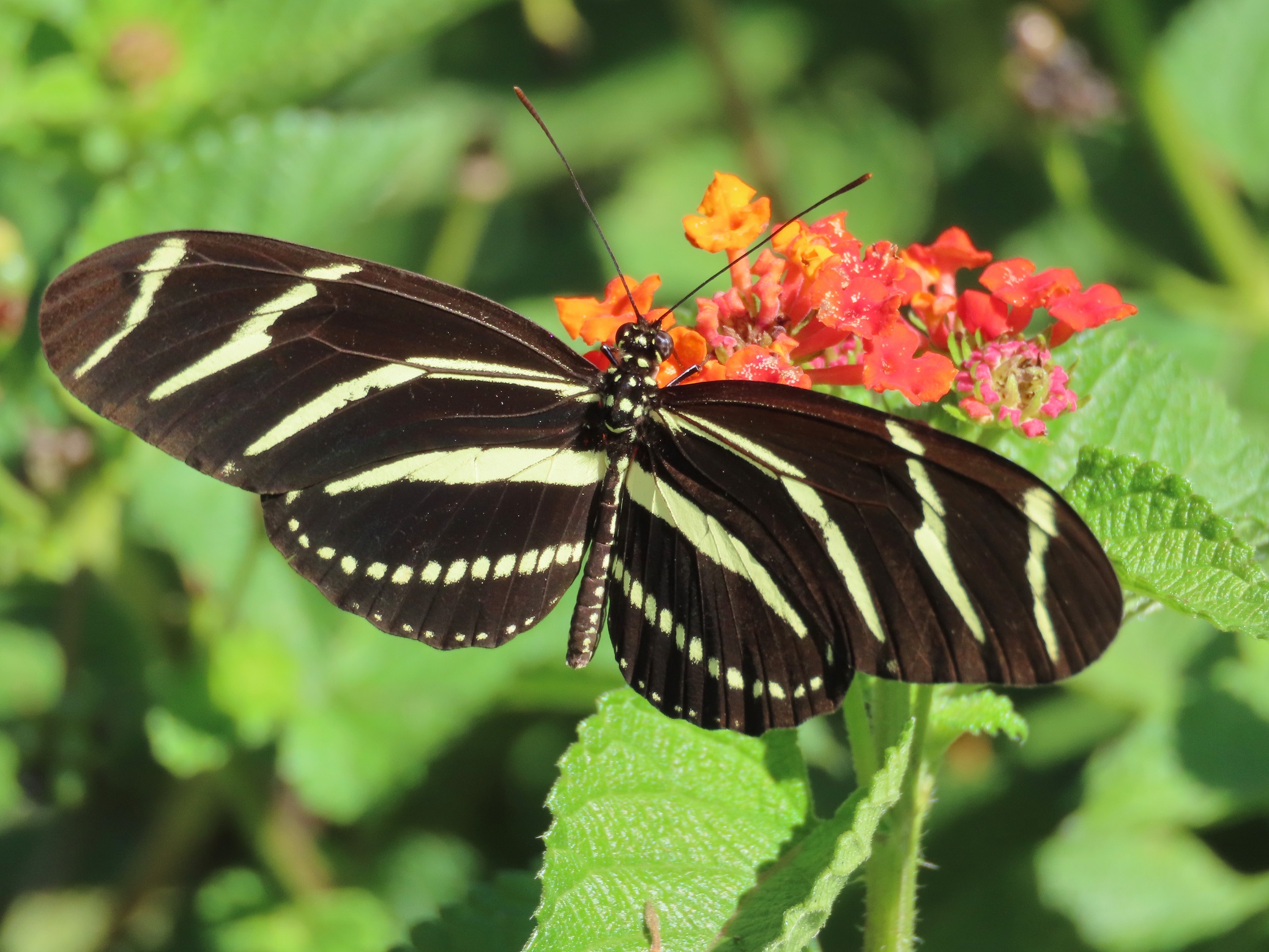
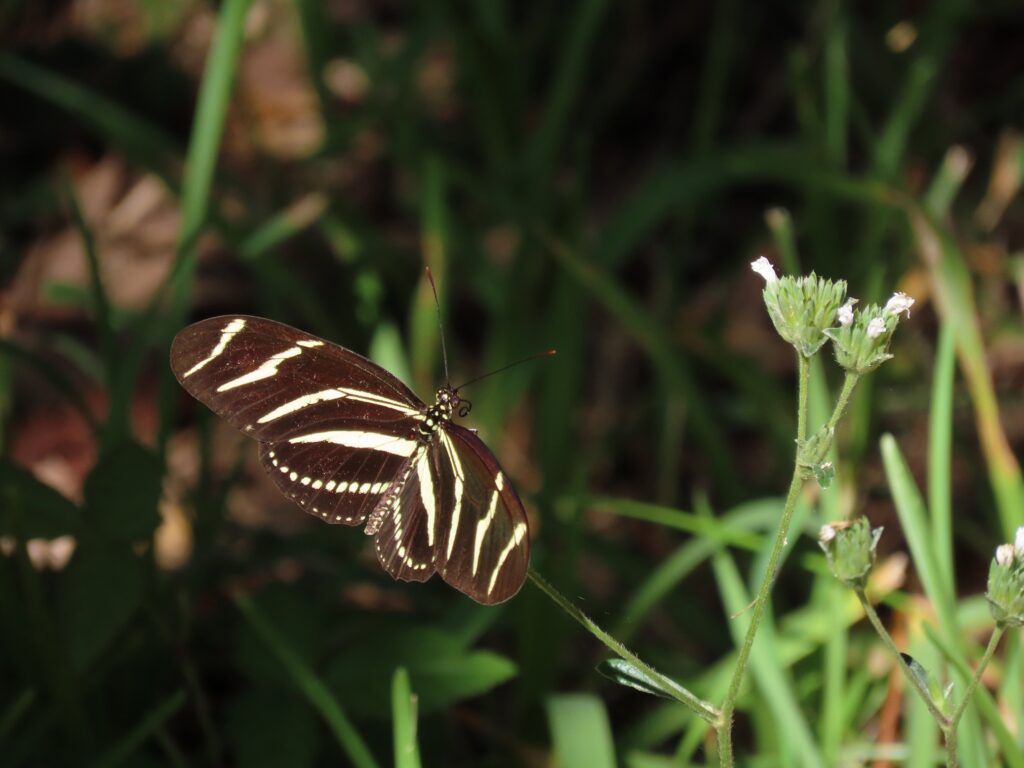
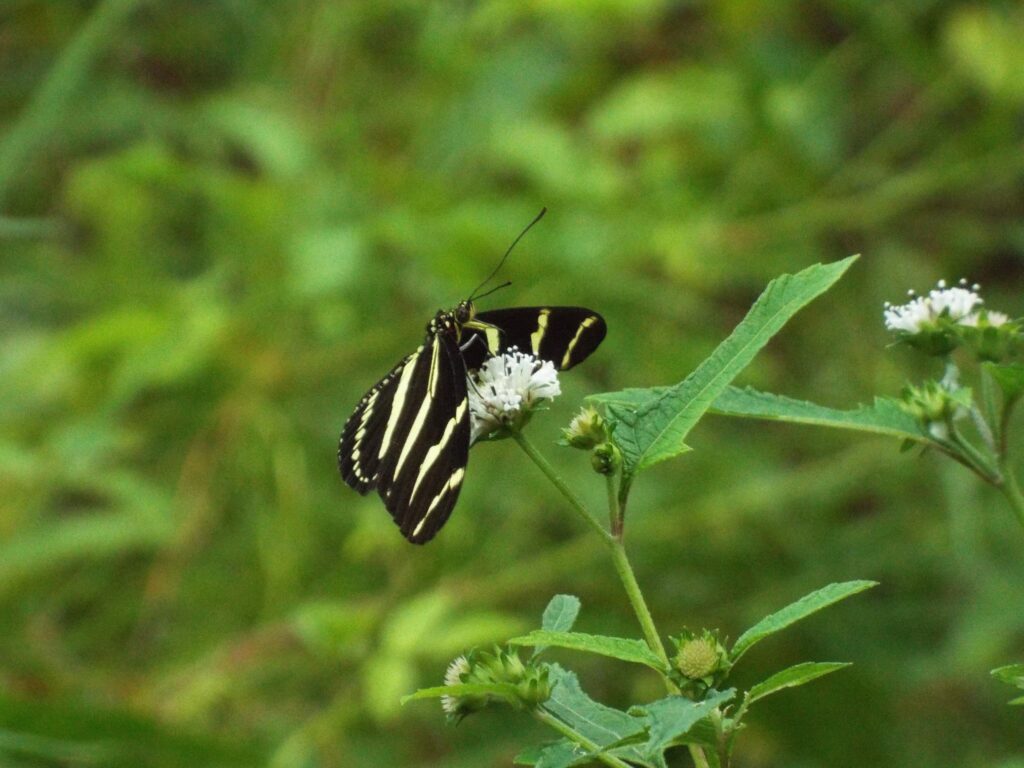
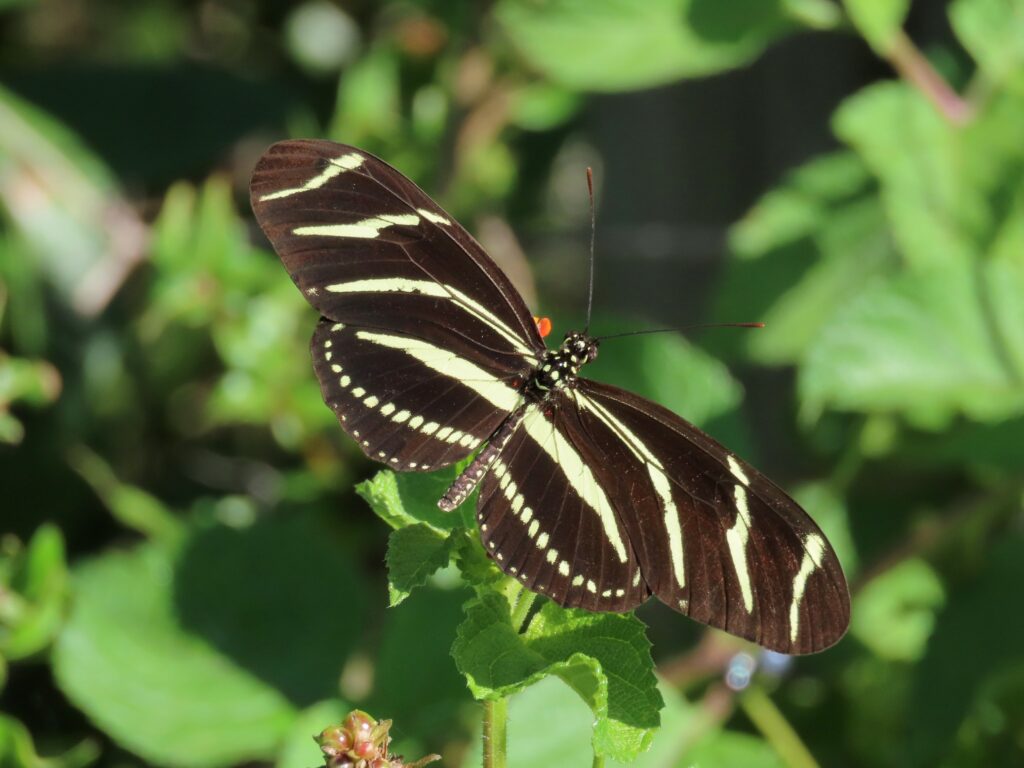
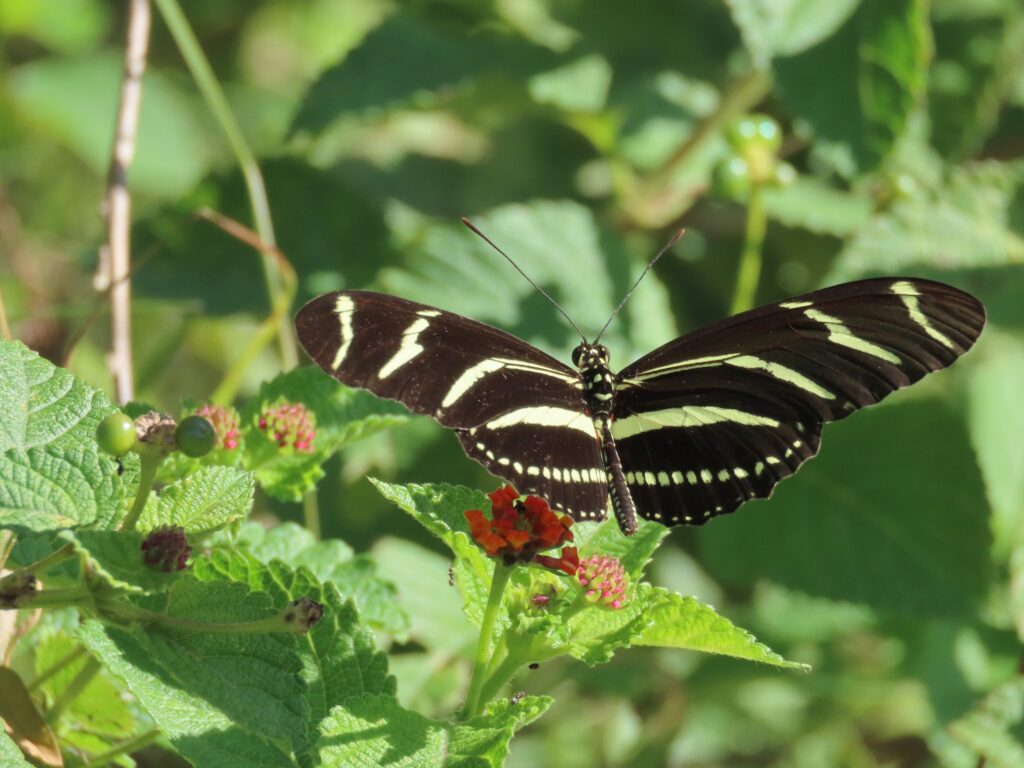
This week for Flora and Fauna Friday, we have a tottering tropical butterfly that vacations on our Island every fall: the Zebra Longwing (Heliconius charithonia).
The Zebra Longwing, or Zebra Heliconian, is a member of the Brushfoot family of butterflies, Nymphalidae. Practically speaking, it’s our only Heliconian in the States but has a close relation to the Gulf Fritillary (Agraulis vanillae). Zebra Longwings are one of those species with an eloquently accurate common name. One where simply remembering that name is sufficient to ID the species. To elucidate, Zebra Longwings have long wings with a zebra pattern on them. A granular matte-black back split seemingly six ways by a quartet of diagonal pastel-yellow stripes and a southward staccato string of spots that is echoed bi-laterally across its body and down its hindwing’s fringes. The down below of this two-tone show is highlighted by a sprinkling of carmine blotches along the flanks of our butterfly.
The Zebra Longwing is graceful and delicate in appearance, slowly fluttering in aimless ballet between the sun flecks of a shade tree. Departing, approaching, circling, wandering and returning through this haunt of its choosing. Rarely fleeing but scarcely approachable. Zebra Longwings are partial to shady, calm forest edges with little wind and dense vegetation. They patrol a territory of nectar plants throughout the day. Visiting the same flowers day after day from dawn to dusk. Zebra Longwings host on Passionflowers. Here in South Carolina, they specifically lay eggs on Yellow Passionflower (Passiflora lutea) which is partial to much the same habitat as our butterfly. Their caterpillar is as unmistakable and boldly patterned as its parents, with a porcelain white skin spotted and spined by glistening black. Zebra Longwings, as mentioned before, are a tropical species. They rarely persist in our State for more than a season and some years they hardly make their way to South Carolina. Yet, in other years they can weather a mild winter here on Edisto and appear the following spring.